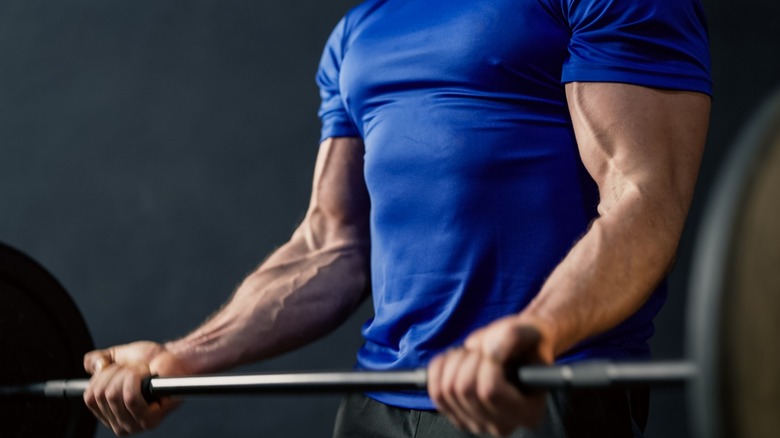How To Prevent The Dreaded DOMS After A Muscle Workout
If you are really interested in maximizing your health, then you probably take the time to exercise. Exercise has a host of health benefits that range from improved mood, better brain health, reduced risk of diseases, and of course stronger and bigger muscles.
You might wonder how exercise can lead to muscle growth. The answer may surprise you. When you engage in various types of exercises — like weight lifting — that use resistance and weight to work out the muscles, you actually create tiny tears in the fibers of the muscles. When you recover, those fibers become repaired and the end result is actually muscle growth. This process is known as "hypertrophy."
After a tough workout, sometimes you may feel especially sore and stiff the day after. This is known as "DOMS," or "delayed onset muscle soreness." Keep reading to learn more about DOMS and how to prevent it.
What is DOMS
We've all been there. Maybe you lifted too hard or did one too many sets. You wake up the next day and you are achy and in pain in the area you targeted for the workout. DOMS is a set of symptoms that people can experience in as little as 12 hours after a workout. You may experience stiff and sore muscles, pains and aches, and overall discomfort (per DMOOSE). These symptoms can actually last up to two days.
While you may think that the soreness and pains that come from the DOMS are a sign of muscle growth, it actually is not. DOMS is caused by inflammation. Further, being too sore after a workout can lead to lowered performance, and even prevent your muscles from growing. Recall that it is the recovery phase that enables your muscles to repair and grow.
How to prevent DOMS
You might wonder what you can do to prevent DOMS so that you can focus on those gains and not the pains. Outside of not working out, there's little you can do to avoid DOMS entirely. But there are several steps that you can take to mitigate the severity and limit the pain.
For starters, DMOOSE notes that you can try to slowly increase the weight load in your workouts, a strategy called progressive overload. That means instead of trying to max out the weight and the number of reps you do, slowly and incrementally increase it over time.
Another key step for mitigating DOMS is hydration. Drink plenty of water so that you can help your muscles recover and further prevent any pain or cramping from dehydration.
Immediately after your workout, you can perform a cool-down session like a light jog. This active recovery session will increase your blood circulation, which may boost muscle recovery. You can also stretch out using a foam roller, which will also increase blood circulation.
Finally, make sure that you get a good night's sleep. Your body recovers during sleep, so that's the time that your body can repair those muscles and beat DOMS.



